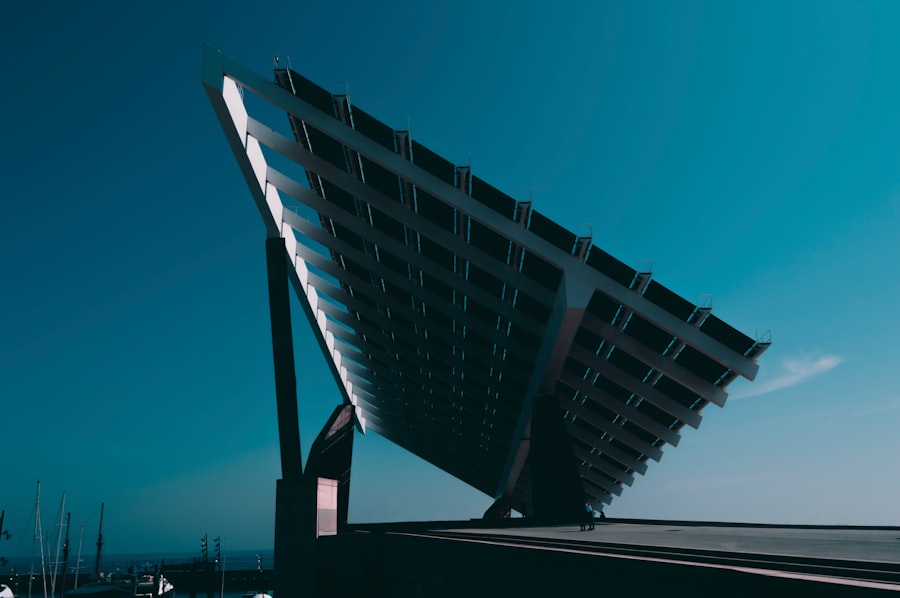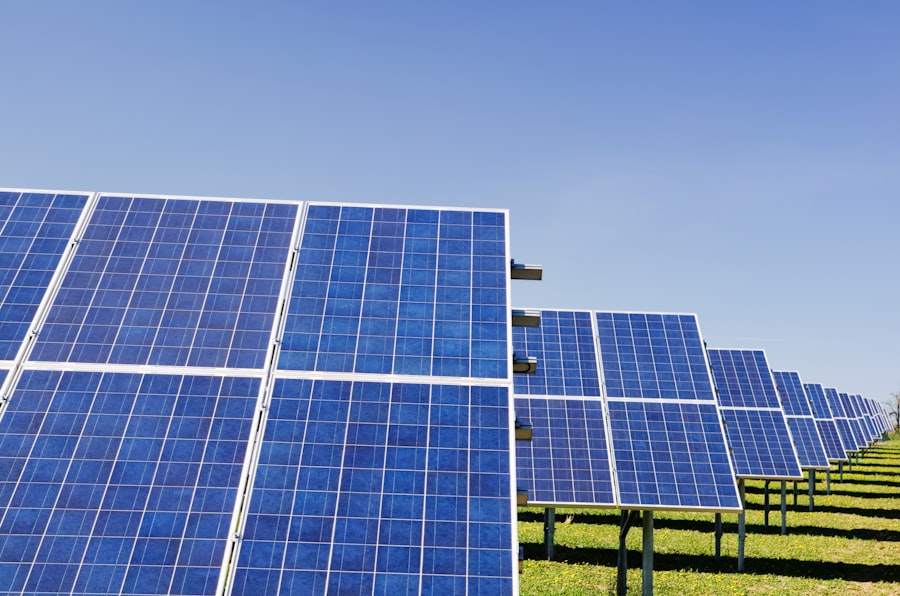When assessing the current energy usage of your older property, it is essential to begin with a comprehensive energy audit. This process involves examining your home’s insulation, heating and cooling systems, appliances, and lighting to identify areas of energy wastage. One may engage a professional energy auditor to conduct a thorough assessment, or alternatively, perform a DIY audit utilising online resources and tools.
Once a clear understanding of the property’s energy usage is established, one can make informed decisions regarding efficiency improvements. In addition to conducting an energy audit, it is crucial to consider the age and condition of your property’s infrastructure. Older homes may possess outdated insulation, draughty windows and doors, and inefficient heating and cooling systems that contribute to increased energy consumption.
By evaluating these factors, one can develop a plan to address underlying issues and implement necessary upgrades to enhance the property’s energy efficiency. Ultimately, assessing the current energy usage of an older home is the initial step towards implementing meaningful improvements that will reduce costs and minimise environmental impact.
Summary
- Conduct a thorough assessment of your older home’s energy usage to identify areas for improvement
- Insulate and seal drafts in your older home to reduce energy wastage and improve efficiency
- Upgrade to energy-efficient appliances and lighting to lower energy consumption and costs
- Consider utilising renewable energy sources such as solar panels or wind turbines to power your older home
- Implement smart home technology to monitor and control energy usage for optimal efficiency
- Incorporate eco-friendly materials and practices in your older home renovations to reduce environmental impact
- Seek financial assistance and incentives for energy-efficient upgrades to make the process more affordable and rewarding
Insulating and Sealing Drafts in Your Older Home
Insulating and sealing drafts in your older home is a crucial step in improving its energy efficiency. Poor insulation and air leaks can result in significant heat loss during the winter and heat gain during the summer, leading to higher energy bills and reduced comfort. To address these issues, you can start by adding insulation to your attic, walls, and floors to prevent heat transfer.
Additionally, sealing air leaks around windows, doors, and other openings with weather-stripping and caulking can help to keep conditioned air inside your home and reduce the workload on your heating and cooling systems. Furthermore, consider upgrading to energy-efficient windows and doors, which can provide better insulation and reduce drafts. Double or triple-glazed windows with low-emissivity coatings can significantly improve thermal performance, while insulated doors with tight seals can prevent air leakage.
By insulating and sealing drafts in your older home, you can create a more comfortable living environment while reducing your energy consumption and lowering your utility bills.
Upgrading to Energy-Efficient Appliances and Lighting

Upgrading to energy-efficient appliances and lighting is another effective way to reduce energy usage in your older home. Older appliances such as refrigerators, washing machines, dishwashers, and water heaters are often less efficient than their modern counterparts, consuming more electricity or gas to operate. By replacing these appliances with Energy Star certified models, you can significantly lower your energy consumption and save money in the long run.
Energy Star appliances are designed to meet strict energy efficiency guidelines set by the Environmental Protection Agency (EPA), offering improved performance while using less energy. In addition to upgrading appliances, consider replacing traditional incandescent light bulbs with energy-efficient LED or CFL bulbs. LED bulbs use up to 80% less energy than incandescent bulbs and can last up to 25 times longer, making them a cost-effective choice for lighting your home.
By making these upgrades, you can not only reduce your energy usage but also enhance the overall functionality and aesthetics of your living space.
Utilising Renewable Energy Sources in Your Older Home
| Renewable Energy Source | Advantages | Challenges |
|---|---|---|
| Solar Panels | Reduces electricity bills, low maintenance | High initial cost, dependent on sunlight |
| Wind Turbines | Generates electricity, eco-friendly | Requires a lot of space, noise pollution |
| Hydroelectric Power | Reliable, long lifespan | Dependent on water source, environmental impact |
Utilising renewable energy sources in your older home is a sustainable way to reduce your reliance on traditional fossil fuels and lower your carbon footprint. Installing solar panels on your roof or property can generate clean electricity from sunlight, providing a renewable alternative to grid-supplied power. In addition to reducing your energy bills, solar panels can also increase the value of your home and contribute to a more sustainable energy future.
Furthermore, if your property has access to wind or water resources, you may consider installing a small-scale wind turbine or hydroelectric system to generate clean, renewable energy on-site. Another option for utilising renewable energy in your older home is to switch to a green energy tariff offered by many utility providers. Green tariffs ensure that the electricity supplied to your home comes from renewable sources such as wind, solar, or hydro power, supporting the growth of clean energy generation.
By utilising renewable energy sources in your older home, you can play a part in mitigating climate change and promoting a more sustainable energy landscape.
Implementing Smart Home Technology to Monitor and Control Energy Usage
Implementing smart home technology to monitor and control energy usage is a modern approach to improving the efficiency of your older home. Smart thermostats, for example, can learn your heating and cooling preferences and automatically adjust the temperature based on occupancy and weather conditions, reducing energy waste. Additionally, smart lighting systems allow you to remotely control and schedule the operation of lights, ensuring that they are only used when needed.
By integrating these technologies into your home, you can gain greater insight into your energy usage patterns and make informed decisions to optimise efficiency. Furthermore, smart home energy monitors provide real-time data on your electricity consumption, allowing you to identify areas of high usage and take steps to reduce waste. Some monitors even offer insights into individual appliance consumption, helping you to pinpoint energy-hungry devices that may need upgrading or replacement.
By implementing smart home technology, you can take proactive measures to monitor and control your energy usage, leading to cost savings and environmental benefits.
Incorporating Eco-Friendly Materials and Practices in Your Older Home Renovations

When renovating your older home, incorporating eco-friendly materials and practices can further enhance its energy efficiency and sustainability. Consider using recycled or reclaimed building materials such as timber, bricks, or metal for construction projects, reducing the demand for new resources and minimising waste. Additionally, choose low-VOC (volatile organic compound) paints and finishes to improve indoor air quality and reduce harmful emissions.
Furthermore, integrating passive design principles into your renovations can maximise natural light and ventilation while minimising the need for artificial heating and cooling. This may involve strategic window placement, shading devices, and thermal mass elements to optimise comfort without relying heavily on mechanical systems. By incorporating eco-friendly materials and practices in your older home renovations, you can create a healthier living environment while reducing your ecological impact.
Seeking Financial Assistance and Incentives for Energy-Efficient Upgrades
Seeking financial assistance and incentives for energy-efficient upgrades can help offset the initial costs of improving your older home’s efficiency. Many governments offer rebates, grants, or tax credits for homeowners who invest in energy-saving measures such as insulation upgrades, appliance replacements, or renewable energy installations. These financial incentives can make it more affordable to undertake energy-efficient upgrades while providing long-term savings on utility bills.
In addition to government incentives, some utility providers offer programmes that provide free or discounted energy audits, as well as rebates for purchasing energy-efficient appliances or installing renewable energy systems. Furthermore, there are often financing options available for homeowners looking to make energy-efficient improvements, such as low-interest loans or green mortgages that reward sustainable upgrades with favourable terms. By seeking financial assistance and incentives for energy-efficient upgrades, you can make meaningful changes to your older home without breaking the bank.
In conclusion, improving the energy efficiency of your older home is not only beneficial for reducing costs but also for minimising environmental impact. By assessing current energy usage, insulating and sealing drafts, upgrading appliances and lighting, utilising renewable energy sources, implementing smart home technology, incorporating eco-friendly materials and practices in renovations, and seeking financial assistance for upgrades, you can make significant strides towards a more sustainable living space. With careful planning and strategic investments, you can transform your older home into an efficient and eco-friendly haven for years to come.
If you’re looking to make your older home more energy efficient without breaking the bank, you might also be interested in learning about the benefits of composting bins. Composting is a great way to reduce waste and create nutrient-rich soil for your garden, and this article explains how you can easily transform your waste into gold with the help of composting bins. It’s a sustainable and cost-effective way to improve your home’s environmental impact.
FAQs
What are some cost-effective ways to make an older home more energy efficient?
There are several cost-effective ways to make an older home more energy efficient, including sealing air leaks, adding insulation, upgrading to energy-efficient appliances, installing programmable thermostats, and using energy-efficient lighting.
How can I reduce energy loss through windows and doors in an older home?
To reduce energy loss through windows and doors in an older home, you can use weather stripping and caulking to seal any gaps, consider adding storm windows or doors, and upgrade to energy-efficient windows and doors if possible.
What are some simple ways to improve the heating and cooling efficiency of an older home?
Simple ways to improve the heating and cooling efficiency of an older home include servicing and maintaining the HVAC system, using ceiling fans to improve air circulation, and shading windows to reduce heat gain in the summer.
Are there any government incentives or grants available for making an older home more energy efficient?
Yes, there are various government incentives and grants available for making an older home more energy efficient, such as the Green Homes Grant in the UK, which provides vouchers to homeowners for energy-saving improvements.
What are some low-cost ways to reduce water usage in an older home?
Low-cost ways to reduce water usage in an older home include fixing any leaks, installing water-saving devices such as low-flow showerheads and faucet aerators, and being mindful of water usage habits.


